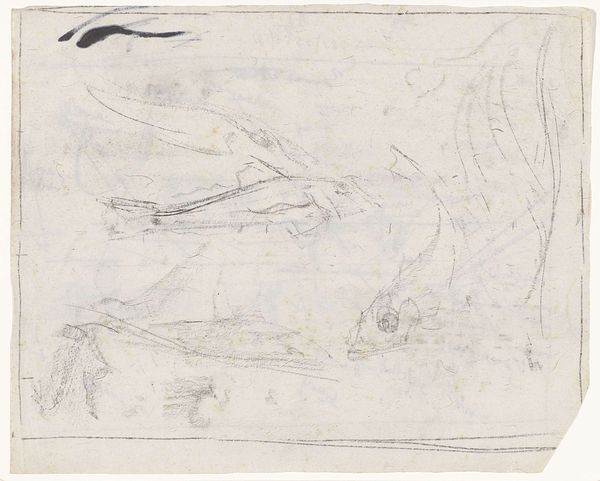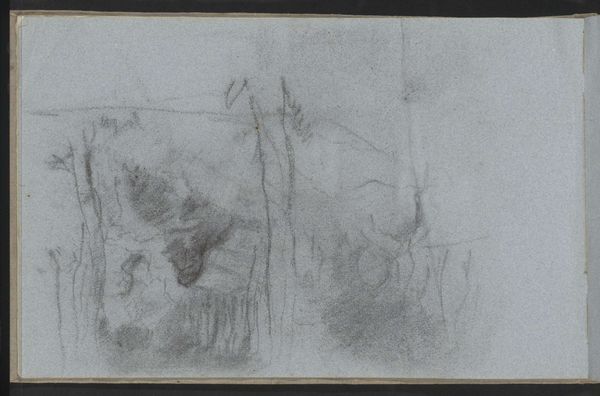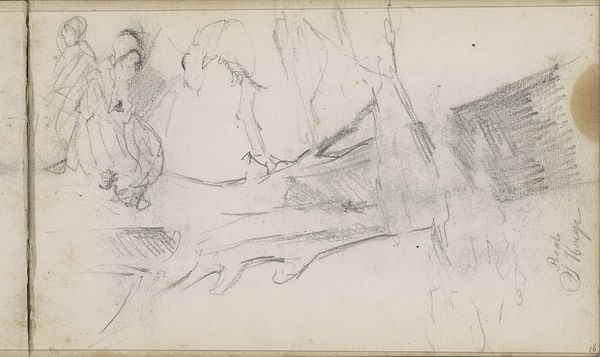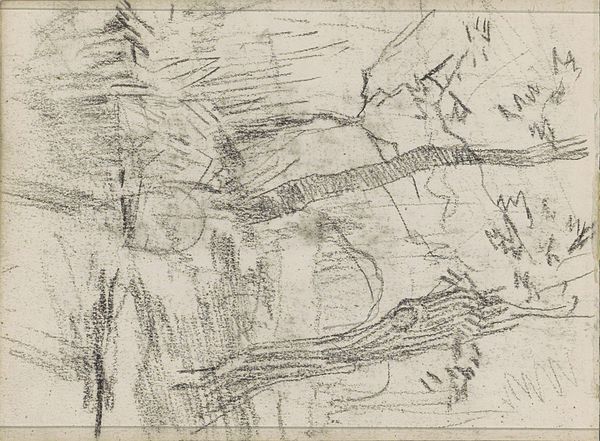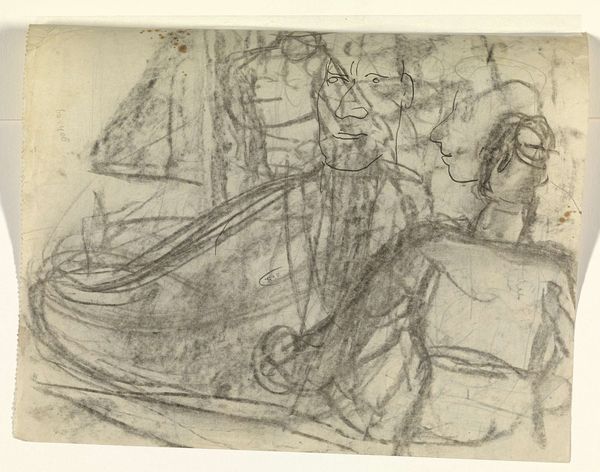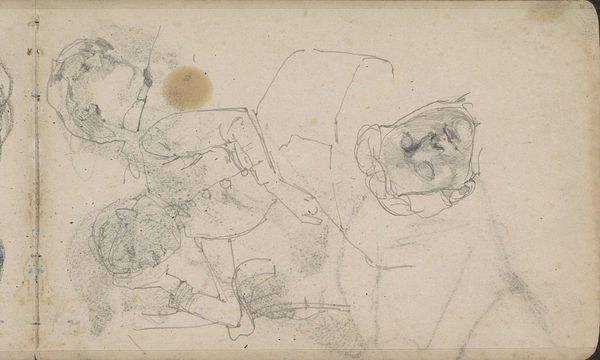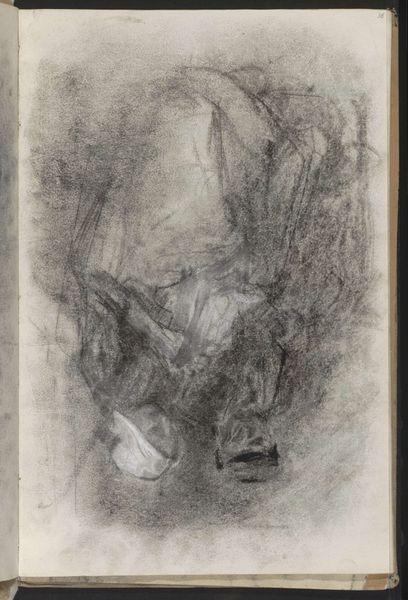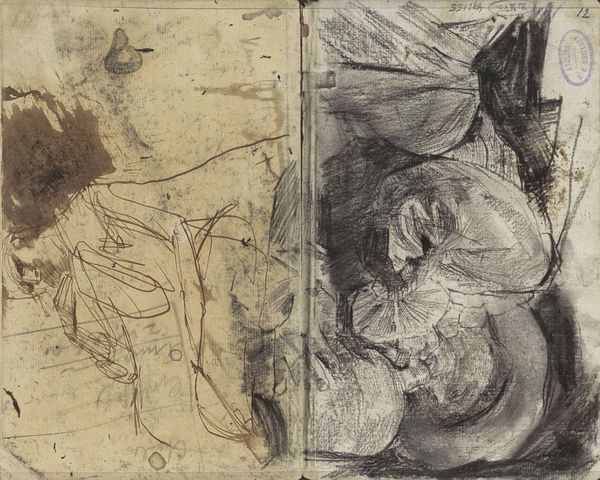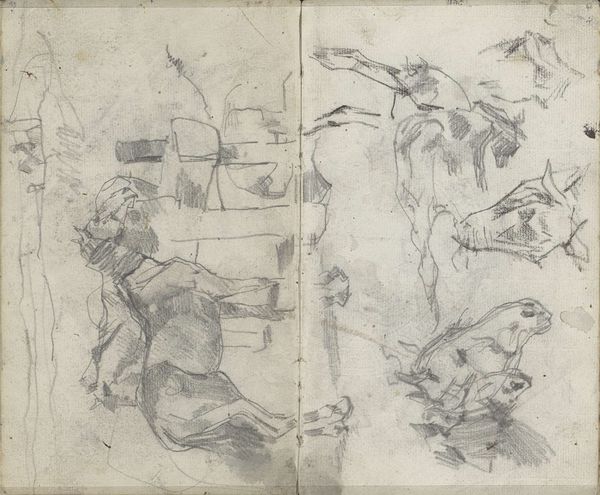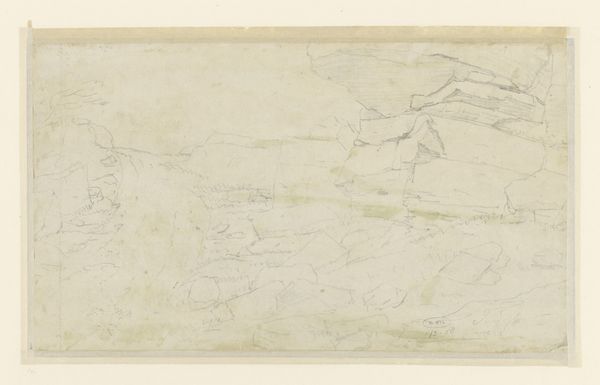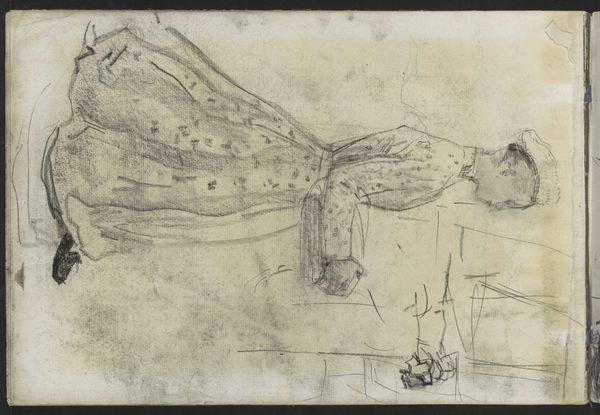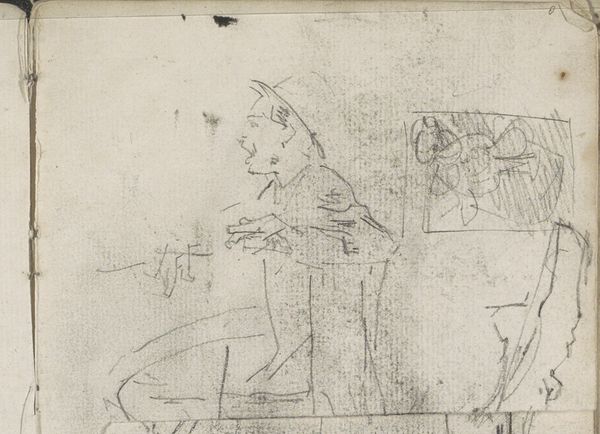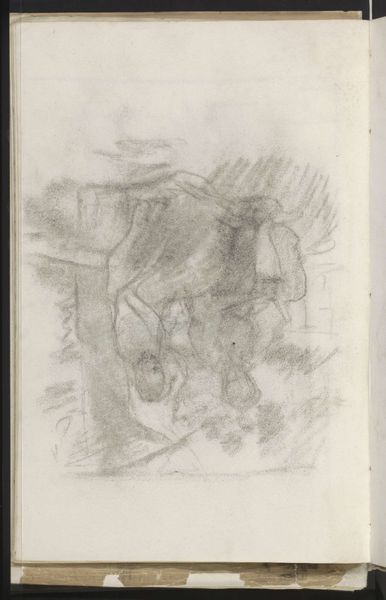
Dimensions: height 296 mm, width 365 mm
Copyright: Rijks Museum: Open Domain
Curator: Welcome. We're looking at "Swimming Fish," a drawing created by Gerrit Willem Dijsselhof, dating somewhere between 1876 and 1924. It’s crafted with graphite, pencil, and charcoal on paper, and held here at the Rijksmuseum. Editor: My initial impression is one of gentle movement, almost dreamlike. The muted tones give it a quiet, introspective quality. A fleeting impression of watery life, captured swiftly. Curator: Precisely. Notice the artist's masterful use of chiaroscuro to create depth. The varying densities of graphite and charcoal model the forms of the fish, lending them volume within this limited color palette. The composition is deliberately sparse, guiding the eye through a network of intersecting lines. Editor: Fish have always carried heavy symbolic weight. In some cultures, they represent abundance and fertility, while in others, they symbolize change or the subconscious. Considering the impressionistic style, perhaps Dijsselhof wanted to capture something more fleeting - the transience of life. Curator: An insightful point. However, from a structural perspective, the repetition of form is just as significant. Each fish, while unique, echoes the others, creating a visual rhythm. This repetition reinforces the notion of a unified, interconnected whole, moving in concert. Editor: I wonder what underwater symbolism means for the artist himself, during his period. Maybe freedom? After all, this piece was made towards the end of the Dutch Golden Age of wealth and culture. The swimming, seemingly unbothered, schools of fish must mean something of great symbolic weight. Curator: An interesting interpretation. It could be fruitful to dive deeper into Dijsselhof's wider oeuvre for any visual motif of comparable density. And beyond visual elements, exploring period documentation regarding water habitats, especially with swimming fauna, may allow for interesting interpretation regarding society, ecology, or culture. Editor: I think, regardless of historical context or analysis, its emotive qualities truly set it apart as it beautifully articulates nature’s subdued and free beauty. Curator: A compelling reading. Hopefully, that has inspired our audience to examine the artwork’s structural and art-historical subtleties a little bit closer.
Comments
No comments
Be the first to comment and join the conversation on the ultimate creative platform.

